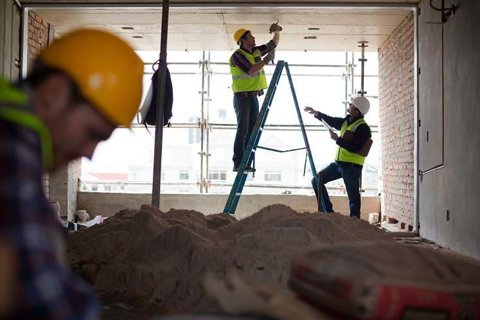
Children’s Home Manager Gets Compensation after Assault at Work
We helped a woman who was working at a children’s home claim compensation after she was assaulted at work and suffered long-term physical and mental injuries.


Senior Associate Solicitor, Serious Injury Claims
The Health and Safety Executive (HSE) regulates workplace health and safety in Britain. Its aim is to prevent work-related injury, fatal accidents and ill health. But, the latest statistics released by the HSE have shown that while there’s been a reduction in non-fatal work injuries, there has unfortunately been an increase in fatal accidents.
Workplace accidents are more common than you would think. According to The Health and Safety Executive (HSE), 565,000 working people sustained an injury at work during 2021/2022. Along with this, more than 61,713 non-fatal injuries were reported by employers during this time, with the most common types of accidents being:
We’ll go through each of these areas in more detail below and explore the meaning behind the latest statistics. For more information tailored to your situation, get in touch with our Personal Injury Lawyers.



Health and Safety Executive. (n.d.). Home. Retrieved from https://www.hse.gov.uk/
Health and Safety Executive. (n.d.). Statistics. Retrieved from https://www.hse.gov.uk/statistics/
Health and Safety Executive. (2022). Health and safety at work: Summary statistics for Great Britain 2021/22. Retrieved from https://www.hse.gov.uk/statistics/overall/hssh2122.pdf
Health and Safety Executive. (2023, November 22). HSE publishes annual work-related ill health and injury statistics for 2022/23. Press release. Retrieved from https://press.hse.gov.uk/2023/11/22/hse-publishes-annual-work-related-ill-health-and-injury-statistics-for-2022-23/#:~:text=The%20figures%20also%20show%20that,for%20workplace%20health%20and%20safety.
Health and Safety Executive. (n.d.). Reporting of Injuries, Diseases and Dangerous Occurrences Regulations (RIDDOR). Retrieved from https://www.hse.gov.uk/riddor/
Simpson Millar LLP. (n.d.). Construction Worker Accident Claims. Retrieved from https://www.simpsonmillar.co.uk/personal-injury-solicitors/accident-at-work-claims/construction-worker-accident-claims/
Health and Safety Executive. (n.d.). Fatal injuries in the workplace. Retrieved from https://www.hse.gov.uk/statistics/fatals.htm
First Mats. (n.d.). Executive Summary of HSE Work-Related Fatal Injuries Statistics 2023. Retrieved from https://www.firstmats.co.uk/blogs/buying-guides/executive-summary-of-hse-work-related-fatal-injuries-statistics-2023#:~:text=The%202023%20HSE%20Report%20on,workers%20aged%2060%20and%20over.
Health and Safety Executive. (2022, November 23). HSE publishes annual work-related ill health and injury statistics for 2021/22. Press release. Retrieved from https://press.hse.gov.uk/2022/11/23/hse-publishes-annual-work-related-ill-health-and-injury-statistics-for-2021-22/
Health and Safety Executive. (n.d.). INDG453 - Involving your workforce in health and safety: Good practice for workplaces with fewer than five employees. Retrieved from https://www.hse.gov.uk/pubns/indg453.htm
Health and Safety Executive. (n.d.). Labour Force Survey (LFS). Retrieved from https://www.hse.gov.uk/statistics/lfs/index.htm
Fill in the form below to get in touch with one of our dedicated team members, or call our team today on: 0800 260 5010